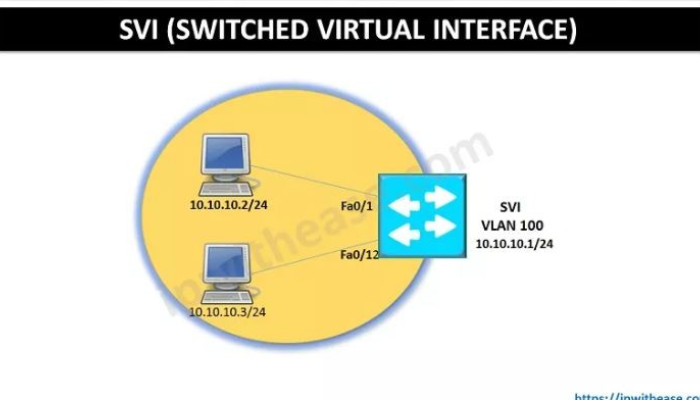
what is svi? This question arises frequently in various fields, including technology, finance, and industrial sectors. SVI, which stands for Sludge Volume Index, plays a critical role in wastewater treatment processes. It is a key parameter used to evaluate the settling characteristics of sludge in wastewater treatment plants. Understanding SVI is essential for ensuring effective wastewater management and environmental protection. In this article, we will explore SVI in depth, discussing its definition, significance, calculation, applications, and best practices.
Understanding the Definition and Importance of SVI
What is SVI?
SVI, or Sludge Volume Index, is a crucial measurement used in wastewater treatment plants to determine the settling ability of sludge. It is defined as the volume what is svi(in milliliters) occupied by 1 gram of sludge after 30 minutes of sedimentation in a graduated cylinder or settler. A low SVI indicates good settling properties, while a high SVI suggests poor sludge compaction, which can lead to operational inefficiencies.
Why is SVI Important?
SVI is important because it directly impacts the efficiency of wastewater treatment. Proper sludge settling ensures that solid waste is efficiently separated from the treated water, preventing system overload and potential environmental hazards. By monitoring SVI, plant operators can optimize the treatment process, improve sludge dewatering, and maintain regulatory compliance.
How to Calculate SVI in Wastewater Treatment
The Formula for SVI Calculation
SVI is calculated using the formula what is svi:
Where:
- Settled Sludge Volume (SSV) is the volume of sludge measured after 30 minutes of sedimentation.
- MLSS (Mixed Liquor Suspended Solids) represents the concentration of suspended solids in aeration tanks.
Interpreting SVI Values
- SVI < 100 mL/g: Good settling properties, ideal sludge compaction.
- SVI 100-200 mL/g: Moderate settling ability; operational monitoring required.
- SVI > 200 mL/g: Poor settling; indicates filamentous bulking or system imbalance.
By consistently measuring SVI, wastewater treatment facilities can proactively address settling issues and maintain optimal plant performance.
Factors Affecting SVI in Wastewater Treatment Plants
Microbial Composition and Sludge Bulking
The presence of filamentous bacteria in activated sludge can lead to sludge bulking,what is svi increasing SVI values. Factors such as low dissolved oxygen levels, excessive organic loading, and imbalanced nutrient levels contribute to the proliferation of filamentous bacteria.
Operational and Environmental Conditions
Temperature, pH levels, and aeration rates significantly impact SVI. For instance, high temperatures can accelerate microbial activity, affecting sludge settleability. Maintaining stable conditions helps optimize the treatment process and control SVI fluctuations.
Applications of SVI in Industrial and Environmental Sectors

Role of SVI in Industrial Wastewater Treatment
Industries such as food processing, pharmaceuticals,what is svi and chemical manufacturing rely on wastewater treatment systems that use SVI measurements. Monitoring SVI ensures that industrial plants meet environmental regulations and maintain efficient waste disposal processes.
Environmental Implications of SVI Monitoring
Efficient sludge settling minimizes environmental pollution. By maintaining optimal SVI levels, treatment plants can prevent the discharge of untreated or poorly treated wastewater into natural water bodies, protecting ecosystems and public health.
Best Practices for Managing SVI Effectively
Implementing Regular Monitoring and Adjustments
Routine SVI testing helps operators detect issues early and implement corrective measures.what is svi Adjusting aeration rates, optimizing chemical dosing, and controlling microbial composition can help maintain desirable SVI levels.
Using Advanced Treatment Technologies
Innovative solutions such as bioaugmentation, membrane bioreactors, and automated sludge control systems enhance wastewater treatment efficiency. These technologies help regulate SVI, ensuring long-term operational stability and environmental compliance.
Conclusion
Understanding what is SVI is crucial for efficient wastewater treatment and environmental sustainability. By monitoring and managing SVI levels, wastewater treatment plants can optimize sludge settling, prevent operational issues, and comply with regulatory standards. Whether in industrial applications or environmental protection, SVI remains a key factor in achieving effective wastewater management.
FAQs
1. What is SVI in wastewater treatment?
SVI (Sludge Volume Index)what is svi measures the settling characteristics of sludge in wastewater treatment plants.
2. Why is SVI important?
SVI helps determine sludge compaction efficiency, ensuring proper wastewater treatment and regulatory compliance.
3. How do you calculate SVI?
SVI is calculated using the formula: .
4. What does a high SVI indicate?
A high SVI suggests poor sludge settling, often due to filamentous bacteria or improper aeration.
5. What does a low SVI mean?
A low SVI indicates good sludge compaction and effective wastewater treatment what is svi.
6. How can SVI be improved?
Optimizing aeration, controlling microbial composition, and using bioaugmentation can improve SVI.
7. What is the ideal SVI range?
An ideal SVI typically falls between 80 and 150 mL/g, depending on the treatment plant’s specific requirements.
8. How often should SVI be tested?
SVI should be tested regularly, at least daily or weekly, to maintain consistent wastewater treatment performance.
9. Can SVI affect water quality?
Yes, improper SVI levels can lead to inefficient sludge removal, affecting the quality of treated water.
10. What technologies help manage SVI?
Advanced solutions like membrane bioreactors,what is svi automated control systems, and bioaugmentation help regulate SVI effectively.





